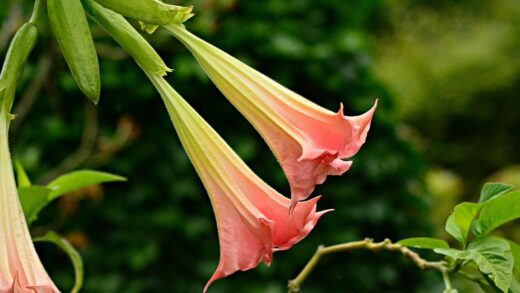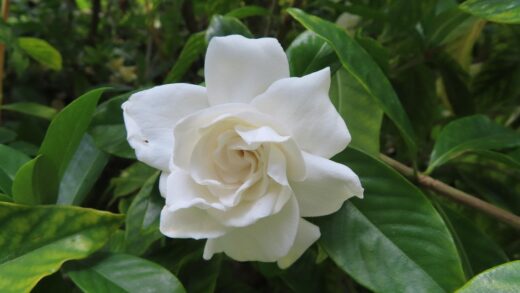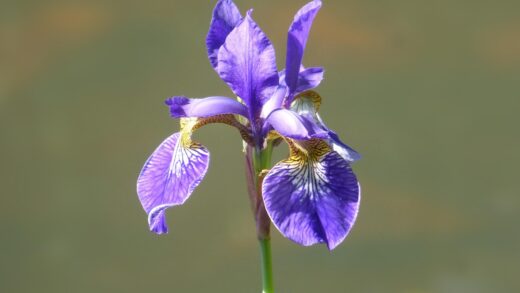While Japanese ornamental cherries are celebrated for their stunning beauty, they are not immune to a range of diseases and pests that can detract from their appearance and, in severe cases, threaten their health. Proactive monitoring and the implementation of sound cultural practices are the cornerstones of keeping these trees healthy and resilient. An informed gardener who can recognize the early signs of trouble is well-equipped to intervene effectively, often preventing minor issues from escalating into significant problems. Understanding the common culprits, from fungal pathogens to sap-sucking insects, is the first step toward successful management and ensuring your tree remains a vibrant centerpiece for years to come.
Fungal diseases are among the most common afflictions of ornamental cherries, particularly in climates with wet spring weather. Brown rot is a major concern, causing blossoms to turn brown and wither prematurely, often followed by the development of cankers on the twigs. Another prevalent issue is cherry leaf spot, which manifests as small, purplish-black spots on the leaves that may eventually drop out, creating a “shot-hole” effect and leading to early defoliation. Powdery mildew, appearing as a white, dusty coating on the leaves, can also be problematic, especially in humid conditions with poor air circulation.
Insects can also pose a significant threat. Aphids are a frequent nuisance, clustering on the tender new growth and undersides of leaves to suck sap, which can cause the leaves to curl and become distorted. Scale insects are more subtle, appearing as small, immobile bumps on the bark of twigs and branches, where they also feed on the tree’s sap, gradually weakening it over time. Tent caterpillars can be a dramatic and damaging pest, creating large silken nests in the crotches of branches and voraciously consuming the foliage.
The most effective strategy for managing these issues begins with prevention. A healthy, well-cared-for tree growing in its preferred conditions—full sun, excellent drainage, and good air circulation—is naturally more resistant to both pests and diseases. Stress from poor siting, improper watering, or nutrient deficiencies weakens a tree’s defenses, making it an easy target. Therefore, adhering to best practices in planting and general care is the most powerful tool in your pest and disease management arsenal.
When problems do arise, an integrated pest management (IPM) approach is recommended. This strategy prioritizes the least toxic control methods first, such as physical removal of pests, pruning of diseased branches, and the use of horticultural oils or insecticidal soaps. Chemical pesticides and fungicides are reserved as a last resort for severe infestations or infections that cannot be controlled by other means. This balanced approach protects the tree while minimizing harm to beneficial insects and the wider garden ecosystem.
More articles on this topic
Common fungal diseases
Brown rot, caused by the Monilinia fructicola fungus, is a destructive disease that primarily attacks the blossoms and young shoots of ornamental cherries. The first sign of infection is the rapid browning and collapse of the flowers, especially during wet spring weather. The infection can then travel from the flower into the twig, causing a small canker to form, which girdles and kills the twig tip. These blighted blossoms and twigs often remain on the tree, and under humid conditions, they may develop fuzzy, tan-gray tufts of fungal spores.
Cherry leaf spot, caused by the fungus Blumeriella jaapii, is another common problem that affects the foliage. It begins as small, circular, purple spots on the upper surface of the leaves. As the disease progresses, these spots may enlarge and turn brown or black, and the center of the spot may fall out, leaving a distinctive “shot-hole” appearance. Infected leaves often turn yellow and drop prematurely, and severe defoliation can weaken the tree, reduce its winter hardiness, and diminish the following year’s bloom.
Powdery mildew presents as a conspicuous white to grayish, powdery or felt-like coating on the surfaces of leaves, shoots, and sometimes flowers. It is most prevalent in shady, humid conditions with poor air circulation. While it may look alarming, powdery mildew is often more of a cosmetic issue on mature trees, though it can stunt the growth of new shoots. Severe, persistent infections can reduce photosynthesis and stress the tree, making it more susceptible to other problems.
To manage these fungal diseases, sanitation is key. Pruning out and destroying any infected twigs and branches helps to reduce the amount of fungal inoculum in the tree. In the autumn, it is crucial to rake up and dispose of all fallen leaves, as the fungi that cause brown rot and leaf spot can overwinter in this debris. Improving air circulation by selectively thinning the canopy can also help the foliage dry more quickly, creating an environment less favorable for fungal growth. In areas with a history of severe infections, preventative fungicide sprays may be necessary, applied in early spring according to label directions.
More articles on this topic
Key insect pests
Aphids are small, pear-shaped, sap-sucking insects that are a common pest on the new, tender growth of Japanese ornamental cherries. They often congregate in dense colonies on the undersides of leaves and on growing tips, causing the leaves to curl, pucker, and turn yellow. As they feed, aphids excrete a sticky substance called honeydew, which can drip onto lower leaves and branches. This honeydew often supports the growth of a black, sooty mold, which, while not directly harmful to the tree, is unsightly and can interfere with photosynthesis.
Scale insects are another type of sap-feeder, but they are often more difficult to spot than aphids. They appear as small, stationary bumps or shells on the bark of twigs and branches. These “shells” are a waxy, protective covering that shields the insect underneath. A heavy infestation of scale can cause branches to die back and can significantly reduce the tree’s overall vigor over time. The crawler stage, when the young scales are mobile, is the most vulnerable time to control them, typically in late spring.
Tent caterpillars, particularly the eastern tent caterpillar, can cause dramatic defoliation. The caterpillars hatch from egg masses in early spring and collectively build large, silken, tent-like nests in the forks of branches. They emerge from the tent to feed on the tree’s leaves, returning to the nest for shelter. While a healthy, mature tree can usually withstand a bout of defoliation and produce a new set of leaves, repeated infestations can weaken the tree significantly.
Control methods for these pests should start with the least toxic options. A strong spray of water can dislodge aphids. Pruning out and destroying tents of caterpillars when they are small is very effective. For more persistent problems, horticultural oils can be used during the dormant season to smother overwintering scale insects and aphid eggs. During the growing season, insecticidal soaps or neem oil can be effective against aphids and young scale crawlers. Encouraging natural predators like ladybugs, lacewings, and parasitic wasps by avoiding broad-spectrum insecticides will also help keep pest populations in check.
Bacterial and other diseases
Bacterial canker, also known as gummosis, is a serious disease that can affect ornamental cherries. It is characterized by sunken, dead areas of bark (cankers) on the trunk and branches, which often ooze a sticky, amber-colored gum. The infection typically enters the tree through wounds, such as those from pruning, frost cracks, or mechanical damage. The cankers can girdle the branches or even the main trunk, cutting off the flow of water and nutrients and leading to dieback or the death of the entire tree.
Crown gall is another bacterial disease, caused by Agrobacterium tumefaciens, which infects the roots and the base of the trunk near the soil line. The bacteria cause the plant tissues to grow into rough, woody, tumor-like swellings called galls. These galls can disrupt the flow of water and nutrients, leading to stunted growth and a general decline in the tree’s health. The bacteria are soil-borne and enter the tree through wounds, so it is important to avoid injuring the roots and trunk during planting and cultivation.
Silver leaf is a fungal disease that gets its name from the silvery sheen it creates on the leaves of infected branches. The fungus, Chondrostereum purpureum, enters through wounds and grows within the wood, releasing a toxin that causes the leaf tissues to separate, creating the characteristic silvery appearance. A key diagnostic feature is the presence of bracket-like fungal growths on the dead wood of the infected branch or trunk. The affected branch will eventually die back.
Managing these diseases relies heavily on prevention. Avoid pruning ornamental cherries during the wet winter months when the bacteria and fungal spores that cause canker and silver leaf are most active; prune instead in the dry summer months. Always use clean, sharp tools to make clean cuts. Protect the tree from mechanical injury from lawnmowers or string trimmers. There are no chemical cures for crown gall or established cankers, so the best course of action is to prune out affected branches well below the diseased area and to maintain excellent tree health to bolster its natural defenses.
Integrated pest management (ipm) principles
Integrated Pest Management (IPM) is a holistic and sustainable approach to managing pests and diseases that prioritizes long-term prevention. The foundation of IPM is a deep understanding of the life cycles of pests and pathogens and their interaction with the environment. Rather than simply reacting to a problem with a chemical spray, IPM involves a series of evaluative steps, starting with setting action thresholds. This means not every single pest requires control; a decision is made based on whether the pest population will cause an unacceptable level of damage.
Monitoring and correct identification are critical components of an IPM program. Regular inspection of your ornamental cherry allows you to spot potential problems early. Correctly identifying a pest or disease is essential because different organisms require different control strategies. Misidentification can lead to the use of an ineffective control method, wasting time and resources and potentially causing unnecessary harm to the environment. Once identified, you can learn about the pest’s life cycle to determine the most vulnerable stage for intervention.
Prevention is the most important strategy in IPM. This involves selecting disease-resistant cultivars when possible and providing the tree with optimal growing conditions to keep it healthy and vigorous. Good cultural practices are a form of prevention: proper soil preparation, appropriate watering and fertilization, correct pruning techniques, and good garden sanitation (like removing fallen leaves) all contribute to creating an environment where pests and diseases are less likely to thrive.
When control is necessary, IPM dictates a tiered approach that starts with the least risky methods. These can include mechanical controls like hand-picking pests or pruning out diseased wood, or biological controls like encouraging natural predators. If these methods are not sufficient, targeted applications of lower-risk pesticides, such as horticultural oils, insecticidal soaps, or microbial insecticides like Bacillus thuringiensis (Bt) for caterpillars, are considered. Broad-spectrum, synthetic chemical pesticides are used only as a last resort when all other options have failed to prevent significant damage.
Creating a resilient tree
The ultimate goal of disease and pest management is to cultivate a tree that is inherently strong and resilient. This process starts with site selection. Planting a Japanese ornamental cherry in a location with at least six hours of direct sun, excellent air circulation, and well-drained soil gives it a powerful advantage from day one. A tree in an ideal site is less stressed and better able to fend off potential threats using its own natural defense mechanisms.
Proper soil health is fundamental to tree resilience. Soil that is rich in organic matter supports a diverse community of beneficial microorganisms that can help suppress soil-borne pathogens and improve nutrient cycling. Amending the soil with compost at planting time and applying an annual top-dressing of mulch not only improves soil structure and moisture retention but also contributes to this healthy soil food web, which is the foundation of a strong plant.
Correct cultural practices play an ongoing role in building a resilient tree. Over-watering can lead to root rot, while under-watering causes drought stress, both of which weaken the tree. Similarly, over-fertilizing, especially with high-nitrogen fertilizers, can produce lush, weak growth that is highly attractive to pests like aphids. A balanced and measured approach to watering and feeding based on the tree’s actual needs is crucial.
Finally, mindful pruning contributes to the tree’s long-term health. Removing dead or diseased wood promptly eliminates sources of infection. Thinning a dense canopy improves air circulation, which helps the foliage dry faster and reduces the incidence of fungal diseases. By focusing on these foundational principles of care, you are not just treating problems as they arise; you are actively building a stronger, healthier ornamental cherry that is naturally better equipped to withstand the challenges posed by pests and diseases.


















